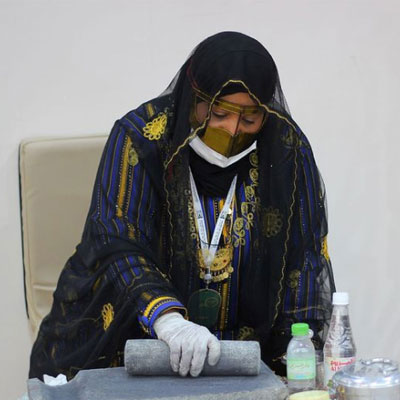“Sharjah Institute for Heritage” Publishes Kersaji’s Journey to the Gulf with a Critical Perspective
The Sharjah Institute for Heritage has released a new book entitled “Kersaji’s Journey to the Gulf” by H.E. Dr. Abdulaziz Al-Musallam, President of the Institute. The book offers a critical reading of the journey of an Indian traveler of Persian origin to the Gulf in the late 19th century, exposing his racial and class prejudice in describing Arabs. Published in 2025 as part of the Institute’s series, the 68-page book is the result of field research conducted in Mumbai.
Sharjah 24:
The Sharjah Institute for Heritage launched a new publication titled “Kersaji’s Journey to the Gulf” authored by H.E. Dr. Abdulaziz Al-Musallam, President of the Institute. It presents an in-depth critical reading of the journey of an Indian traveler of Persian descent to the Gulf region in the late 19th century, revealing racist undertones and class prejudice in his descriptions of Arabs, framed within an orientalist context influenced by the British colonial perspective.
The book is part of the Institute’s 2025 publications, consisting of 68 pages, and is the fruit of a cultural and field trip made by Al-Musallam to Mumbai in June of last year, where he searched the city’s government archives for documents related to the Gulf, in collaboration with several academics, including researcher Dr. Chhaya Goswami.
A Shocking Text and a Documentation Project
The origins of the project go back more than two decades, when Dr. Al-Musallam came across a book titled “Land of Palms” in a bookstore. He was shocked by its content, where the author described the people of the Gulf with offensive remarks, such as:
“Most of them are Arabs and Persians… characterized by rude manners and ugly appearances… these passengers rarely bathe, or do not bathe at all.”
He also described the workers as:
“Like a band of vagabonds… noise, filth, disheveled hair… likened by passengers to Ali Baba and the Forty Thieves.”
Such harsh language prompted Al-Musallam to delve deeper into the travel text and analyze the cultural and social contexts that shaped this biased perspective toward the people of the Gulf and the region.
A Cultural Analysis of a Colonial Context
The book examines Kersaji’s journey from Bombay to Basra between 1916 and 1917, during the height of World War I, when British influence in the Gulf was on the rise. While the traveler provides detailed descriptions of ports, people, customs, natural landscapes, and folklore, a critical reading reveals a prejudiced outlook that reflects the superiority complex prevalent in British orientalist discourse toward Arabs at that time.
A Publication as Part of an Ongoing Project
Dr. Al-Musallam emphasized:
“These publications are not just written papers, but rather an intellectual project that reflects the commitment of the Emirate of Sharjah and the United Arab Emirates to preserving cultural heritage and passing it on to future generations.”
He added that this work represents the first part of a larger project, with a second volume to be published later. That upcoming part will cover Kersaji’s writings on his visits to other Arab countries and regions, including his observations on architecture, social life, markets, and local populations—an attempt to link the textual image with the historical and cultural reality of that period.




